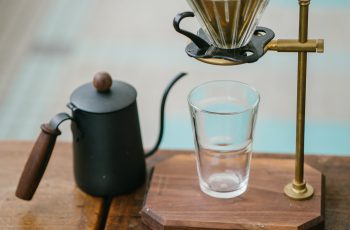Ever curious about who cooked up the idea for the coffee maker? Well, let me spill the beans: it was Melitta Bentz back in 1908. This clever inventor brewed up the **first drip coffee maker** with a simple yet genius hack – a filter crafted from blotting paper. Stick around, and you’ll discover even more eye-opening secrets behind your morning cup of joe!
History Of The Coffee Maker
The historical backdrop of the coffee maker, in the same way as other developments, started sometime in the past. The Turks were known to brew espresso way back in 575 A.D.
Today, there are in a real sense many dribble espresso producers available, all varieties of the first Mr Coffee Maker. Will any of the fresher models become deified throughout the entire existence of the espresso producer? The truth will surface eventually.
Surely, there’s consistently space for development and innovation. The historical backdrop of the espresso producer is loaded up with them, for example, the equilibrium siphon, which looked a ton like a scale. As the water injected from one side of the instrument to the next, a snuffer would cover the fire, winding down the warmth, permitting the water to cool and get back to the first chamber.
The Raw Materials To Make A Coffee Maker
Most programmed dribble espresso producer parts are made out of plastic, including the body and the bin which holds the channel. The base plate, hotter plate, and warming unit are made out of different metals, generally steel or anodized aluminium. Different parts incorporate clocks, switches, and wiring.
The Manufacturing Cycle Of A Coffee Maker
The parts for the programmed dribble espresso producer are ordinarily made by specific shops. The computerized timekeepers, clocks, and switches are bought from organizations that produce those things. The plastic parts are made at a plastics organization and the metal parts at a metal stepping plant. The production of the real espresso creator comprises assembling this load of parts.
Injection Molding
The plastic parts for programmed dribble espresso creators are planned by the maker and afterwards moved to forte plastics organizations. The plastics organization utilizes the producer’s plan to make a form. Then, at that point parts are created by injection molding; warmed plastic is constrained into the form under tension, cooled, and delivered. These parts are then sent to the producer for gathering.
Stamping
The metal base plate is made at a particular metal stepping plant. A sheet of metal is carried out, and substantial machines finish off the predefined shape. Then, at that point, these are sent to the producer.
Assembling All The Parts
The pieces of the espresso creator are assembled on a sequential construction system. The electrical parts are collected first. These are planned so they can be essentially snapped together. Labourers remaining at the sequential construction system each snap in a section as it comes to them, and the entire line might have 40 to 80 labourers, each making a specific showing.
The clock gadget is snapped in, then, at that point the string. The metal hotter plate is snapped on, and afterwards, the indoor regulator is wired. The beds are set on a transport line that brings them through a sonic welding machine. This naturally welds the wiring for the radiator.
When the interior wiring is finished, the remainder of the pieces—the lodging and the channel supply—are snapped together.
Packing The Coffee Maker
After everything gets together, labourers place the espresso creators in little containers. Then, the labourers place these containers in bigger pressing containers which may contain a few units.
These might be taped closed the hard way, or they might be taped naturally by passing on a transport line through a taping machine.
Ordinarily, another machine naturally engraves a standardized tag on the pressing box, for the following data. Then, at that point, the containers are stacked on huge beds and transported or put away in a distribution centre.
Quality Control Of The Machine
At the point when the re-appropriated parts show up at the espresso producer maker, an auditor looks at them. Any deficient parts are removed before they are taken to the mechanical production system.
Then, there might be a few focuses along with the sequential construction system where arbitrary pieces are eliminated and assessed. Normally, a 100 piece review is done toward the finish of the interaction. 100 units are taken to the mechanical production system, and these are entirely checked for inward and external abandons.
Conclusion
European makers are trying different things with espresso creators made out of solitary plastic. The upside of this is that the unit is recyclable. The single plastic can be softened down and once again utilized after the machine is discarded. There are unmistakable designing issues to making a solitary plastic espresso creator since upwards of six distinct plastics are utilized in certain models to make up a solitary part.


